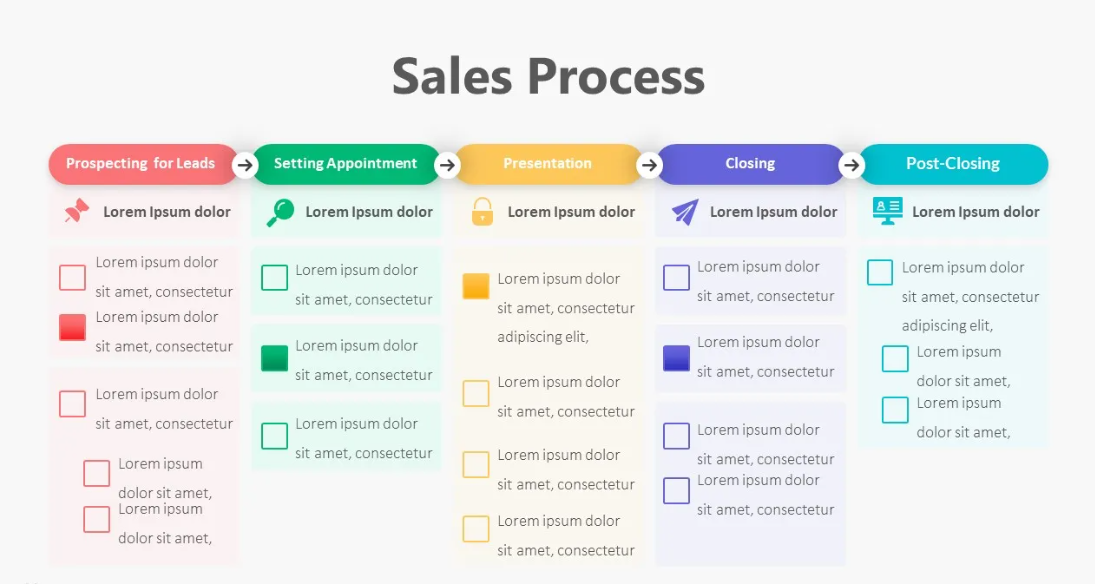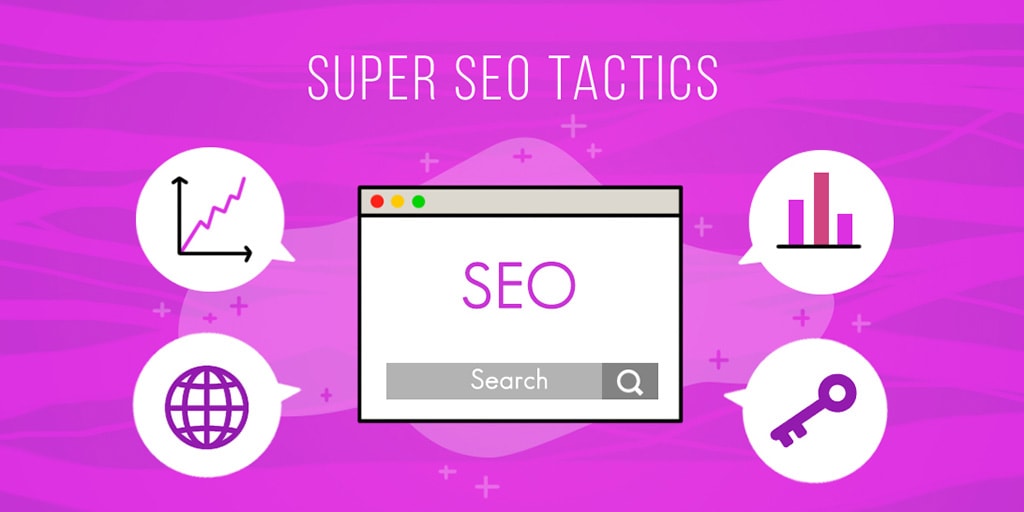Acquiring new customers is one of the most important goals for any business. It’s down to your sales team to identify prospective leads, qualify them, and lead them through the sales funnel. New customers are an important source of revenue and help your company to grow sustainably.
Unfortunately, this process can be somewhat chaotic and disorganized. You have a sales team using wildly different methods to interact with customers and close deals, with the result that your company’s revenue may not always be on target. Customers are subjected to an inconsistent experience with your sales team that doesn’t always leave the best impression of your brand.
The solution to these bumpy rides in the sales team is to create sales process documentation. With documentation, you can take your sales process to the next level, make it more transparent, and provide a consistent experience that takes your prospects to paying customers.
What is Sales Documentation?
Sales documentation is the written record of the steps that your sales reps need to take in order to close deals in the most effective way. The sales process covers everything that your reps should do in order to prospect, qualify leads, deal with objections and close the deal.
Your sales documentation can be useful for both your seasoned and experienced sales reps as well as your new hires who need to learn the ways of working in your company. Your customers are taken through a structured process that is tailored to their needs, and unique to every business.
Also Read: What is IT Documentation: Types, Examples & Templates
Types of Sales Documentation
Sales Process Playbook
A sales process playbook is a document for sales teams that outlines best practices, tactics and strategies used to take a prospect through the different stages in the selling process. Reps can learn what they should do in a particular situation such as prospecting, nurturing or pitching the product.
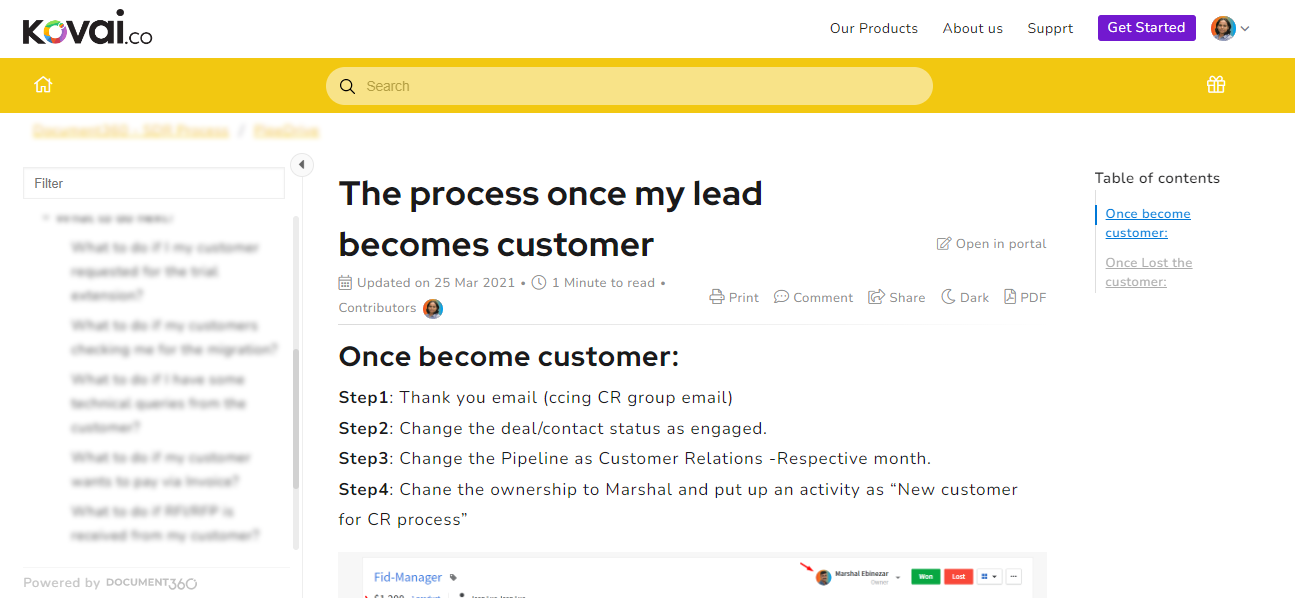
Also Read: The Ultimate Guide to Create a Business Playbook
Sales Collaterals
Sales collateral is any documents that the sales rep can use to move the customer through the sales funnel, supporting the sales process and increasing the likelihood that the customer will convert. The purpose of these collaterals is to give buyers the information they need to decide whether they want to buy your product.
1. Pricing documents
Pricing documents tell your customers exactly how much the product or service will cost and help them decide whether it is within budget. It is likely to contain bespoke quotes for particular customers containing details of what exactly your company will deliver.
2. Competitor battlecards
Competitor battlecards are resources designed for your sales team when they are going head-to-head against a particular competitor. It highlights all the ways that your product outshines the competitor’s offering by comparing your company’s product, service, features, and/or pricing.
3. Case Studies
Case studies are resources that explore the problems faced by your customers and present how your product is the most viable solution. Case studies are an in-depth form of customer testimonial that show your prospects how your product can benefit them. They are a type of social proof by showcasing how your product has helped similar clients.
4. Product Demos and Explainer Videos
Customers will rarely purchase a product that they haven’t seen demonstrated beforehand. Product demos and explainer videos are a type of collateral that explain your product to prospective customers in a visual manner.
Frequently Asked Questions
Frequently asked questions are just what it says on the tin – a document that answers all of the most commonly asked questions from your customers. Needless to say, these save your sales reps a lot of time and effort.
Sales Training Documents
Sales training documents are guides that contain information about your company for new hires. It includes things like your company goals, your selling process, your ideal client and the way you should interact with them, and the do’s and don’ts of selling to your customers.
Also Read: Ultimate Guide to Creating a Training Manuals
Interested in Document360 Knowledge base? Schedule a demo with one of our experts
Book A Demo
Why do Businesses Need a Structured Sales Documentation?
Clear and Easy-to-follow Process
When your business has proper sales documentation it means your whole sales team has an easy-to-follow process that can be repeated many times. This process is a culmination of seasoned best practices based on the experience of your sales reps of what they have found to be the best way to close deals.
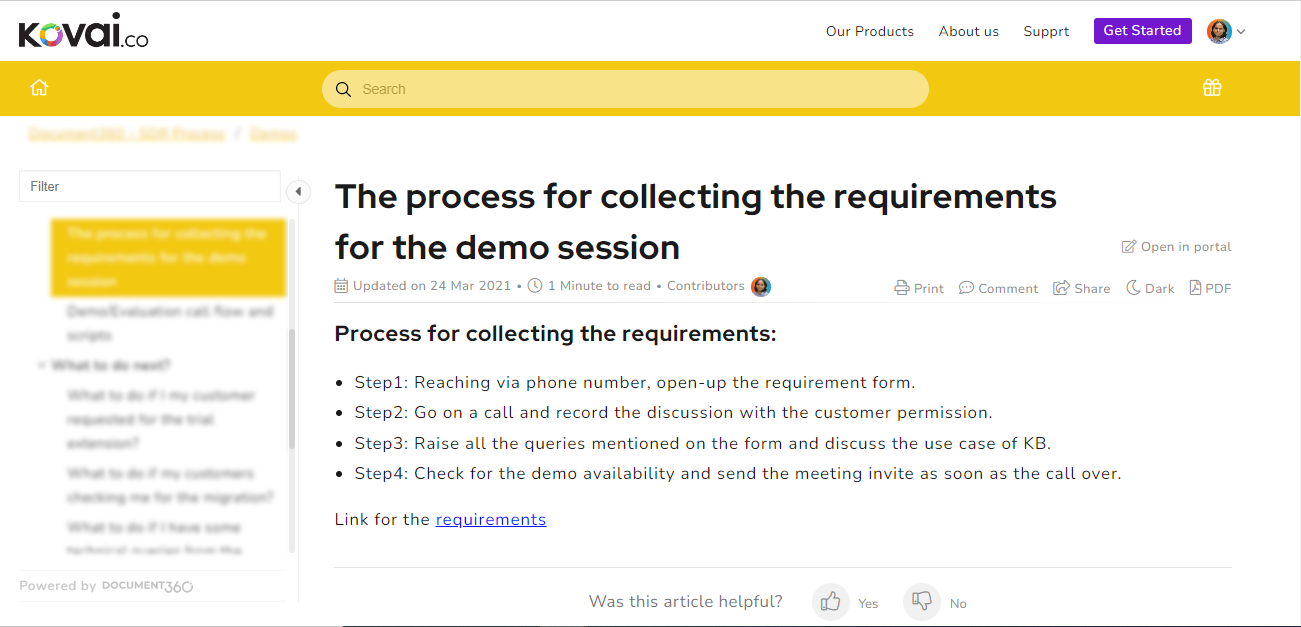

Helps to Maintain Brand Standards in Sales
Following a sales process means that your business can maintain brand standards during the sale, so that customers benefit from a consistent experience no matter who they deal with on your sales team. Your sales team are effectively representing your company as part of a cohesive brand instead of random, impulsive interactions.
Enhance Sales Pitches
When sales reps have clear and easy steps to follow they can offer enhanced sales pitches to customers. They have access to all the information they need to construct compelling pitches that win over more leads and turn them into customers. Example pitches can form part of your sales collateral that your sales team can reuse every time they need to pitch customers.
Faster Sales Response
If they are following a standardized process this means that your reps can help customers more quickly. It’s easy to identify where customers are in the sales process and the steps the sales rep needs to take in order to move them closer to a deal. There is no uncertainty over the next move that the sales rep needs to make.
Empower Sales Agents
When sales agents know exactly what to do they are empowered to do their jobs better. They can reach out only to the most qualified leads and nurture them through to closing. Even brand new sales reps will have access to the resources they need to close the most deals. Agents are on track to meet their quotas and bring in a steady stream of new business for the company.
Helps Sales Teams Perform More Efficiently
If everything in your sales team is documented then your agents will be performing more efficiently because they don’t have to search around for the right information. Sales process documentation eliminates the need for unnecessary actions and focuses your sales rep on closing the deal with your customers.
Steps to Prepare a Perfect Sales Documentation
Define purpose of the document
When getting started with your sales process documentation, you need to define exactly what the purpose is of your document. Is it to provide sales teams with information about how to treat prospects, or support their activities with collateral such as pricing?
Getting clear about the purpose of your document enables you to design resources that are both appropriate for and useful to your sales agents. Your sales team has unique needs and no two companies will have the same requirements for a document.
Prepare sales templates
One of the most beneficial aspects of sales documentation is the ability to create sales templates for your reps to use when interacting with customers, saving them valuable time and energy.
Sales templates for your sales team can include email templates and sales scripts that your reps can reuse every time they have a conversation with a customer. These templates don’t have to be robotic, but they need to ensure that agents are covering the key points and value propositions for your products.
Also Read: Step by Step Guide to Create Sales Documentation
Categorize your prospects
Prospects fall into different categories which will require a varying approach from your sales team. Provide your sales team with the resources they need to categorize your types of prospects so they can instantly know how to interact with these clients.
When you go through the process of categorizing your prospects you can also decide whether they are qualified to become leads. If they don’t fit into any category then it may be best to decide to move on to better-qualified candidates.
Describe Approaches to Meet the Different Prospects
Next, it’s time to detail the way in which you will approach your different type of prospect. Your approach will vary depending on several factors, such as the type of business need, vertical of your customer, budgetary requirements, and more.
Your sales reps will be able to quickly learn how your prospects need to be treated and offer a more tailored presentation for their needs.
Preparing Documents for Sales Pitch
You need to include all the appropriate information that your sales reps will need in order to craft a persuasive sales pitch for your prospects. Tailoring a sales pitch for each customer takes a reasonable amount of time so it should be reserved for the more qualified leads later down the sales funnel.
Your document for your sales pitch should take into account your customers’ unique use case and their individual pain points rather than being a generic document.
Describe How to Handle Objections
It’s almost guaranteed that your prospective customers will have objections to your sales rep’s presentation and proposal. That’s why you need to provide them with a document that details how to handle the possible objections that prospects might come up with and supply compelling reasons for customers to choose your product over others.
Reps might have to prepare themselves to present justifications for objections relating to cost, product set-up, ongoing maintenance, and more. Anticipating possible objections in advance makes it more likely your reps will be able to come up with compelling solutions.
Find Ways to Convert, Upsell or Cross-sell
Agents should always be prepared for the chance to convert, upsell or cross-sell. Highlight in your documentation particular scenarios in which it would be appropriate to attempt a sale with existing customers and increase their lifetime value. This means maintaining the sales relationship even after the customer has been handed over to your customer success team.
This can be particularly helpful if your company develops a new product that may appeal to existing customers. Keep your eye out for opportunities to add value to your existing customers and make a new sale.
Sales Documentation Best Practices
Brainstorm With Your Sales Team
The people who are best-placed to create your sales documentation are the members of your sales team. Sit down with your sales reps and brainstorm all the ways that documentation could help their process, and come up with particular documents to create that will be useful.
If your sales team is involved in coming up with your documentation, this makes it more likely they will adopt it when they’re implementing their workflows. Your documentation must actually make your reps’ lives easier instead of becoming an administrative burden.
Focus on What is Important for Your Sales Team
Your sales team will have their own priorities and KPIs so your documentation should support them in their efforts. For example, they might be looking to increase their conversion rate of all new prospects so your documentation could help them get better at qualifying leads.
Any documentation that doesn’t support your sales team in attaining their goals should be scrapped. Identify key areas where your sales rep can benefit from additional documentation to streamline their workflows.
Schedule for Content Refresh and Updates
As time goes on, it’s likely that your sales team will have evolving needs. Schedule time to assess your existing content and highlight areas where you’ll need to update the documentation to better reflect the present reality.
When you go through the process of using the documentation you’ll be able to find out which documents are particularly useful and make sure they are accessible to your sales reps.
Samples of Sales Documentation
In order to learn from the best practices of other businesses you can use samples of sales documentation to inspire your own efforts. Although each company is unique and has individual requirements when it comes to sales process documentation, you can still use samples as templates for your own content.
When you know that a sales document has already been effective this can give you more confidence when using it for your own team.
Keep Content Accessible and Easy to Search
You’ll need to prevent your documentation on a platform that is accessible to your reps and is easy to search. One of the best solutions for hosting documentation is knowledge base software like Document360, which lets you create a website that presents your content in a hierarchy and offers a powerful search bar.
With knowledge base software, you can make your knowledge base internal so only your sales reps can access the site through a login. Content is searched using both the body and the title, alongside tags which you can add to your articles.
An intuitive internal knowledge base software to easily add your content and integrate it with any application. Give Document360 a try!
GET STARTED



Create your Sales Documentation using Document360
As we’ve just mentioned, it’s highly beneficial if you use documentation software like Document360 to create your content. There’s no better solution if you’re looking for a fantastically intuitive experience coupled with a powerful ability to scale and expand your operations.
Easy to Use
First and foremost, Document360 is very easy to use. There is no training required to adopt the software, which replicates the ease of traditional word processors like Microsoft Word.
Full Text Search
Full text search enables users to search in the entire body of an article every time they submit a search term in the powerful search bar.
Intuitive UI
Document360’s UI is very intuitive so users can get started with creating, publishing, and analyzing content in a matter of minutes to hours, not days or weeks.
Role-Based Permissions
The content publishing process is made easy with role-based permissions that control who has access to what actions in the platform.
Scalability
With Document360, you can easily scale your knowledge base when your needs change. It’s suitable for startups and small businesses as well as the enterprise.
Private Documentation
You can make your knowledge base private so that only selected users can access your content. This means you can keep your sales documentation internal rather than open to the public.
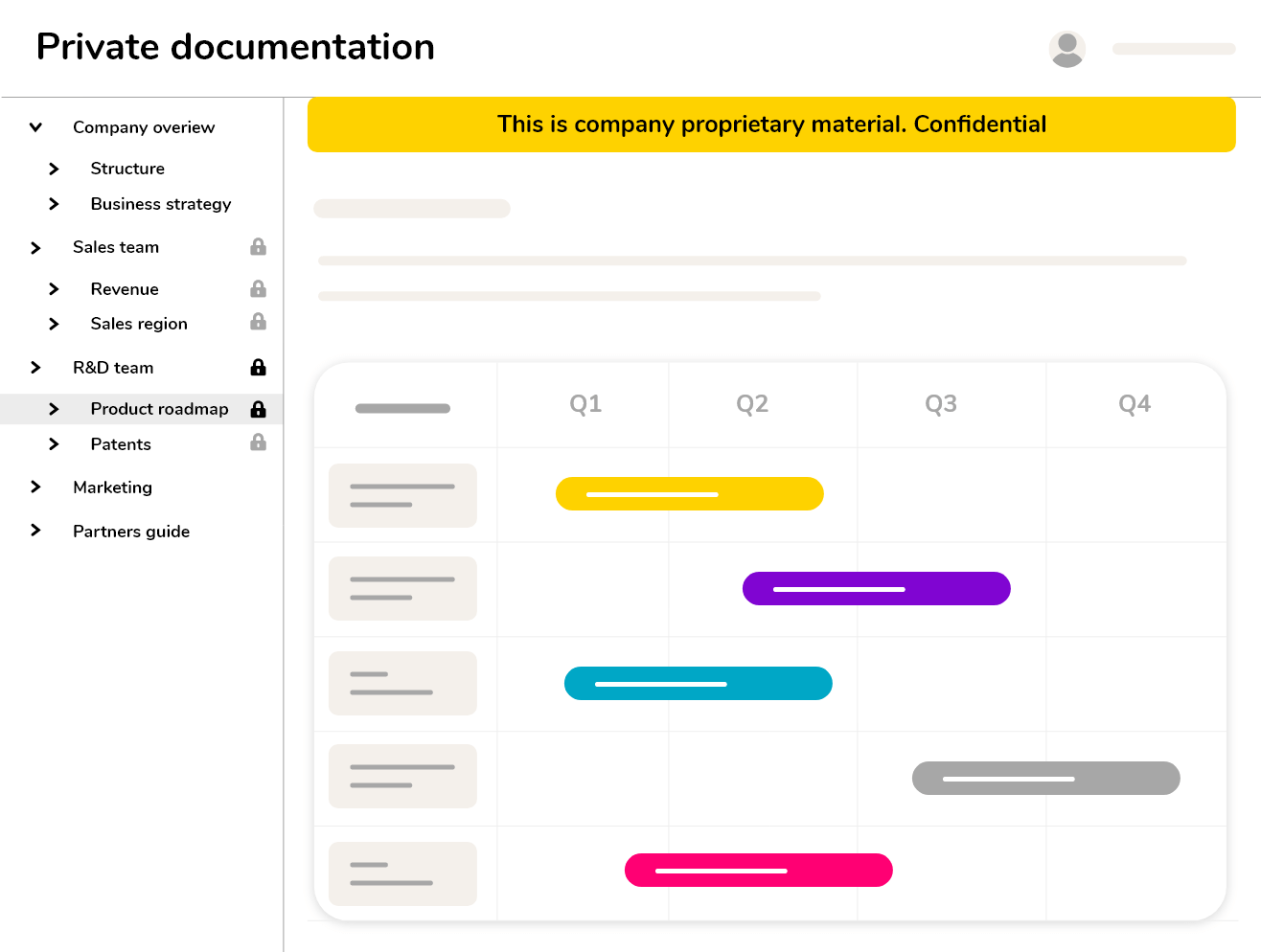

Content Structuring and Hierarchy Management
It’s easy to manage the structure and hierarchy of your content with categories and subcategories.
Sales Documentation Examples
Sales Process Documentation created using Document360
The sales team at our parent company Kovai.co used Document360 to document its sales process in order to increase sales and have a clear sales procedure that the team could access online. They can use the search feature to look for case studies and other information about the sales process that can empower the sales team.
Keeping track of the actions you take to close the transaction will be helpful for your consumers’ purchasing decisions.
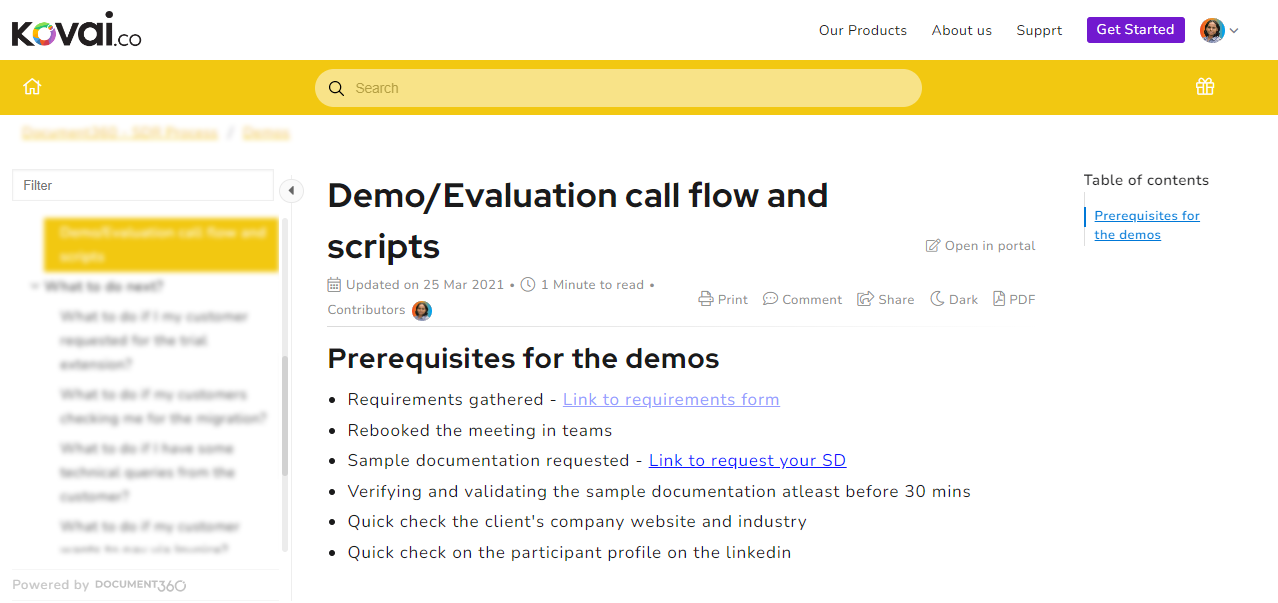

Sales Process Template
This template only concentrates on the key duties associated with the five stages of the sales process: client prospecting, appointment arranging, demo presentation, closing the deal, and post-sale activities.
Wrap up
Companies with sales teams that use sales process documentation will have a more efficient selling process and enjoy higher revenue than teams that follow no standards. Documentation gives your prospects a more consistent experience when it comes to interacting with your sales reps and saves your reps a lot of time.
In-depth sales documentation means it’s much faster to get your new reps up to speed and selling more to customers in a shorter amount of time. Documentation helps your sales reps meet and exceed their quotas, enabling your company to experience unprecedented growth and success.
When creating your sales documentation, consider a solution like Document360 to meet all of your sales needs. You’ll end up with a beautiful knowledge base that sales reps will consider a joy to use.
Interested in Document360 Knowledge base? Schedule a demo with one of our experts
Book A Demo



Frequently Asked Questions
-
Why do you need sales documentation?
Confluence is a collaborative workspace that enables teams to work more effectively on mission-critical projects. You may produce and organise your work in a single location, ensuring that knowledge is never lost again. It enables teams to collaborate more effectively.
-
What are the types of sales documents?
Some examples of sales documentation are Sales Process Playbook, Sales Training Documents, Sales Collateral like Pricing documents, Competitor battlecards, Case Studies, Product Demos and Explainer Videos .
-
What are the benefits of sales documentation?
With proper sales documentation, your whole sales team has an easy-to-follow set of brand standard sales guidelines, which helps sales representatives enhance their pitches and respond to customers more effectively.


